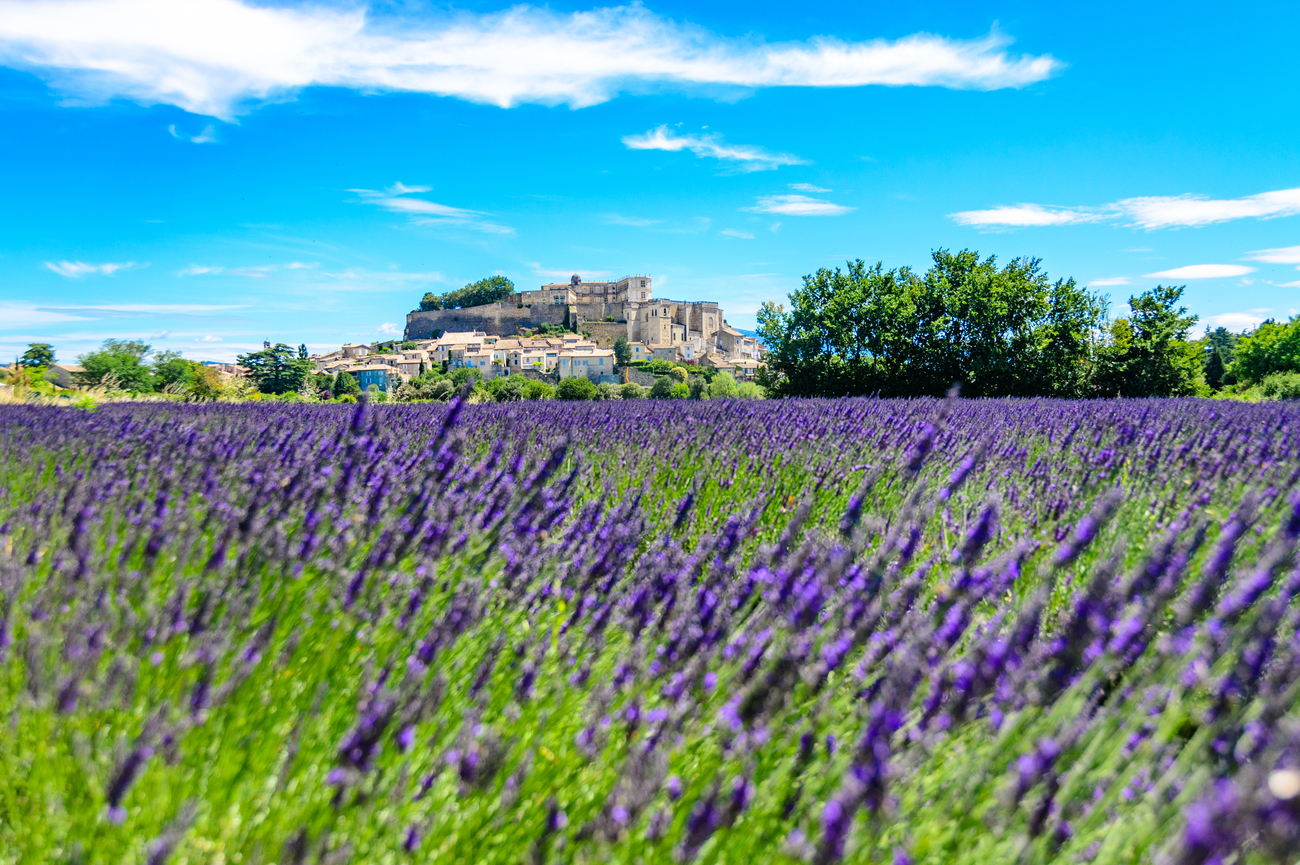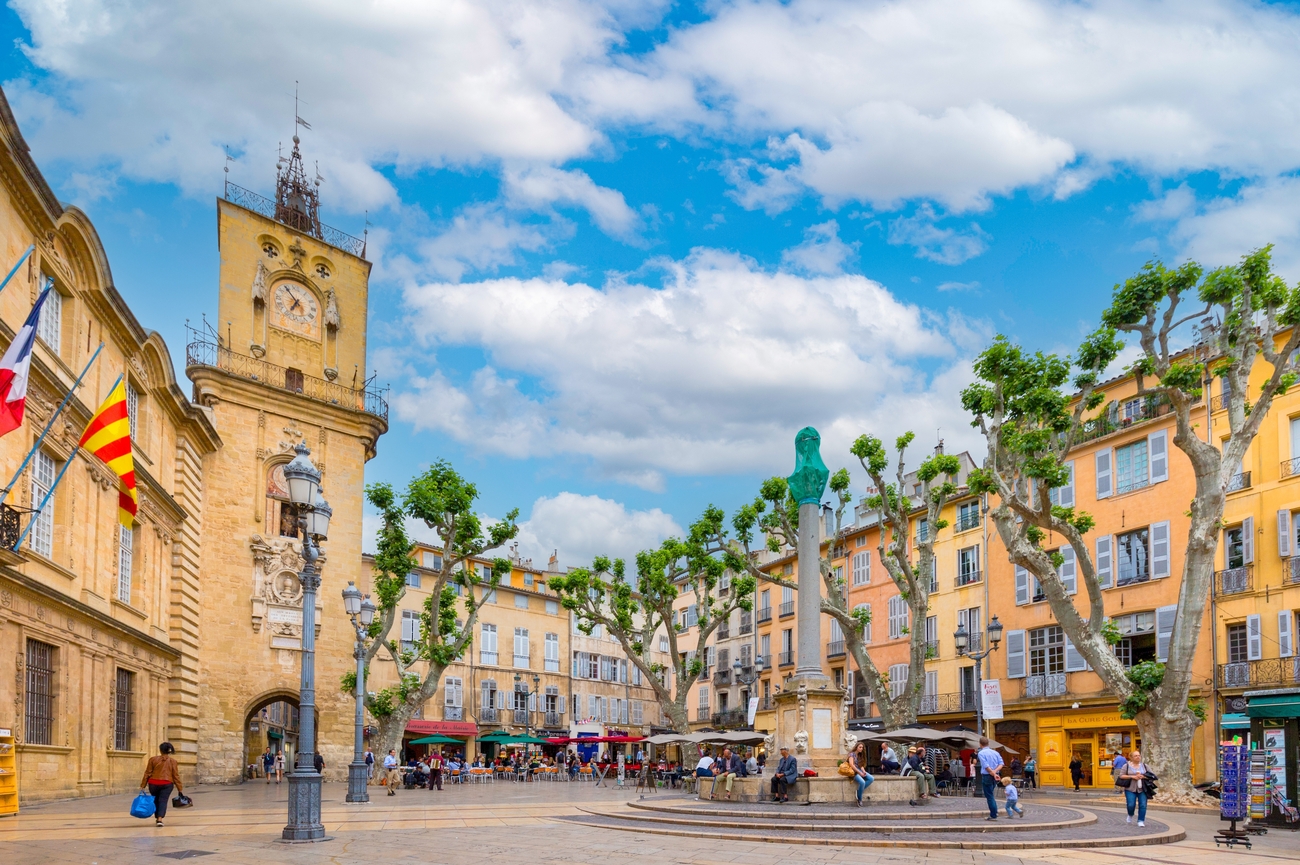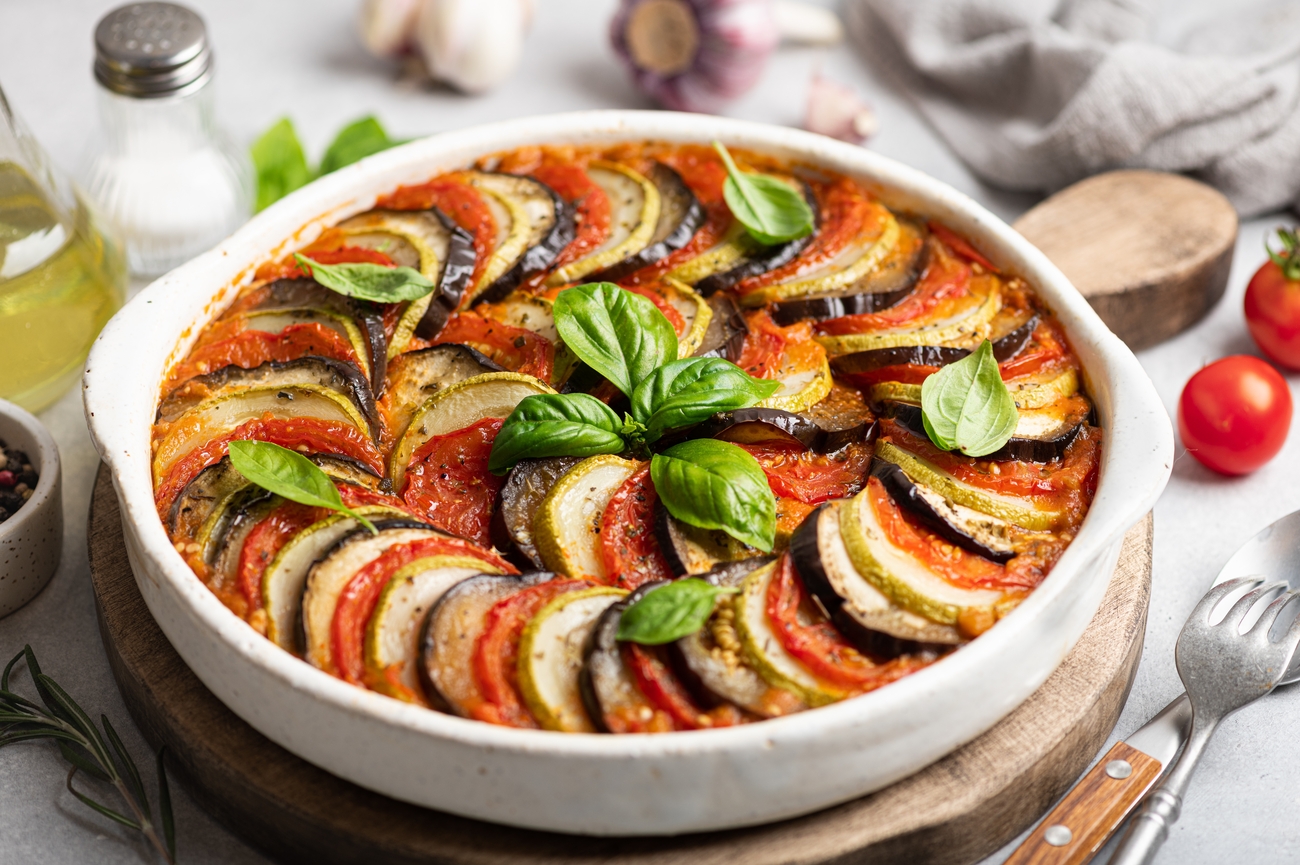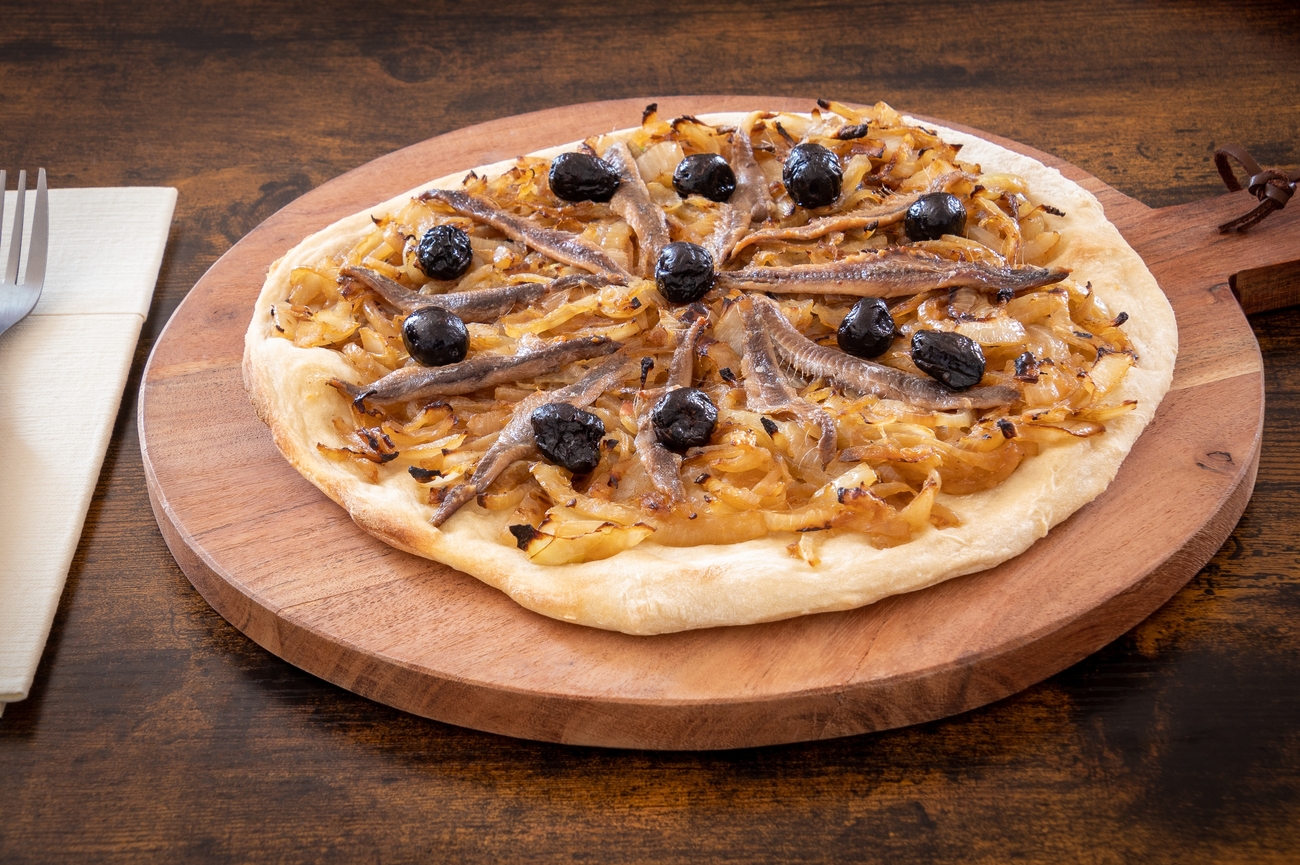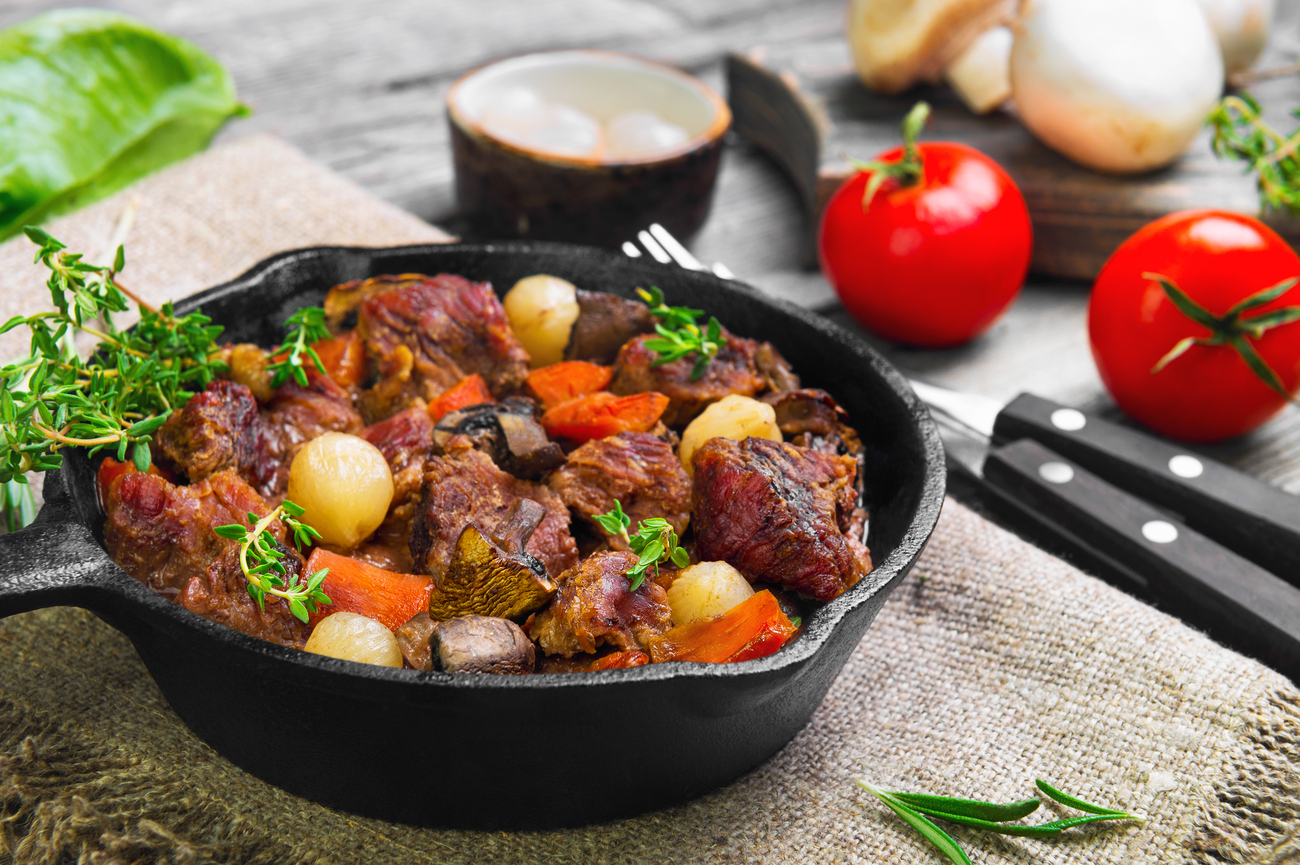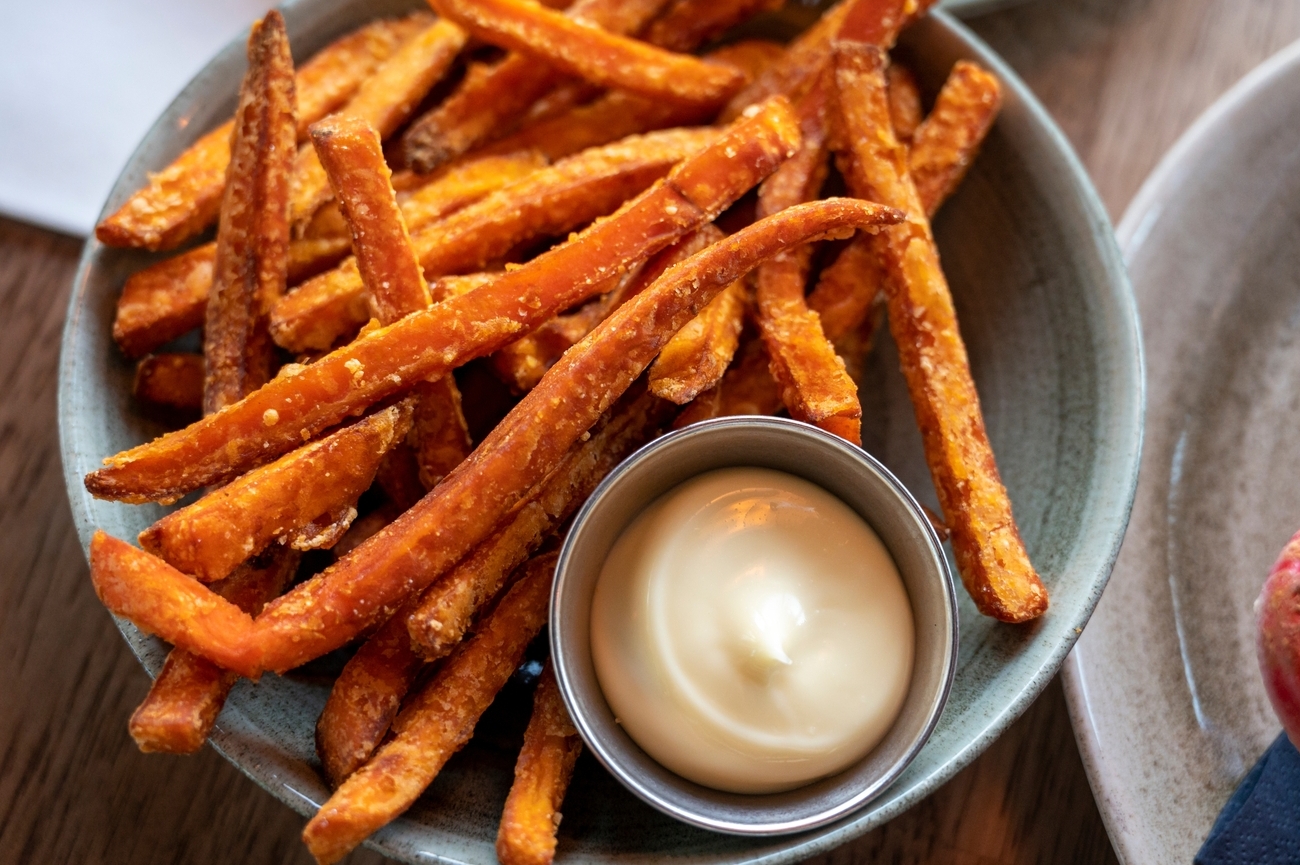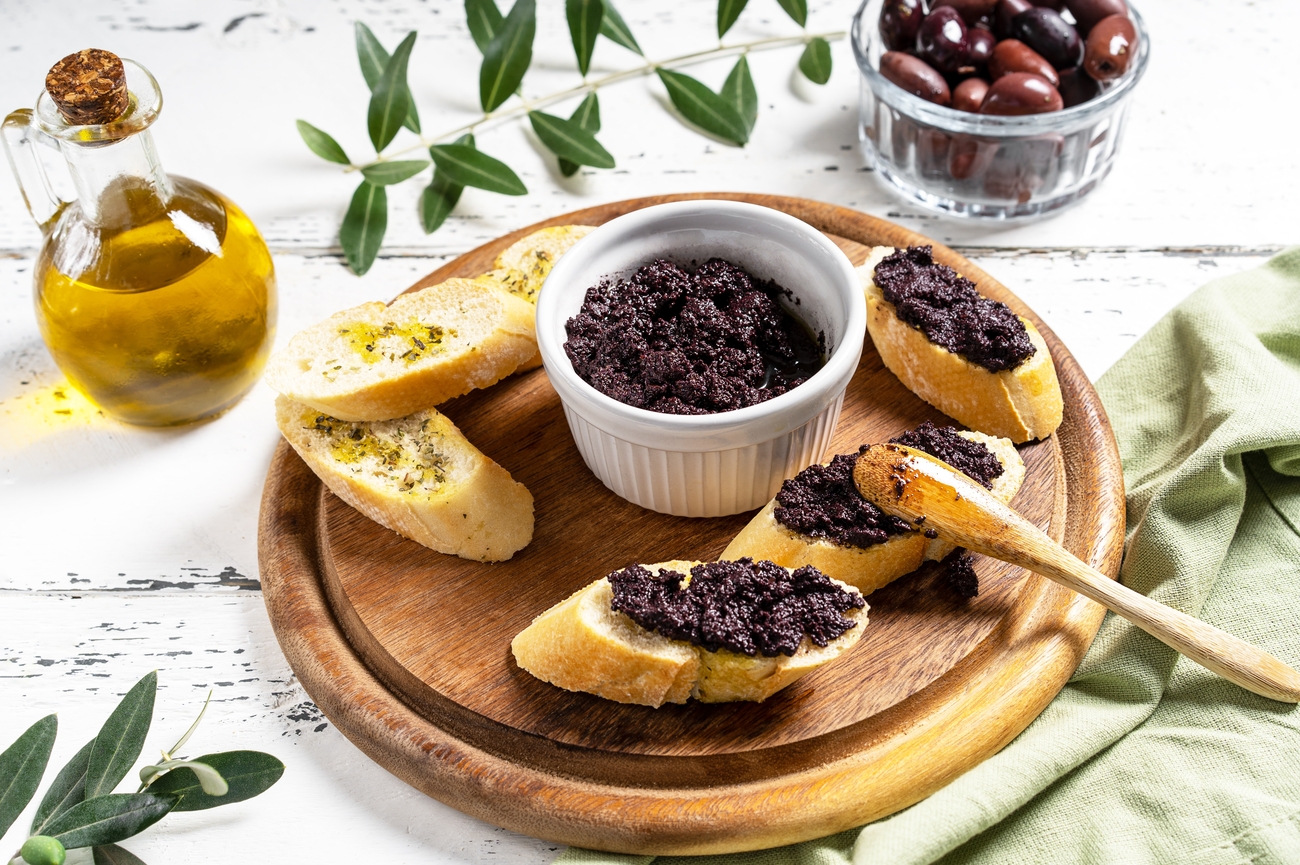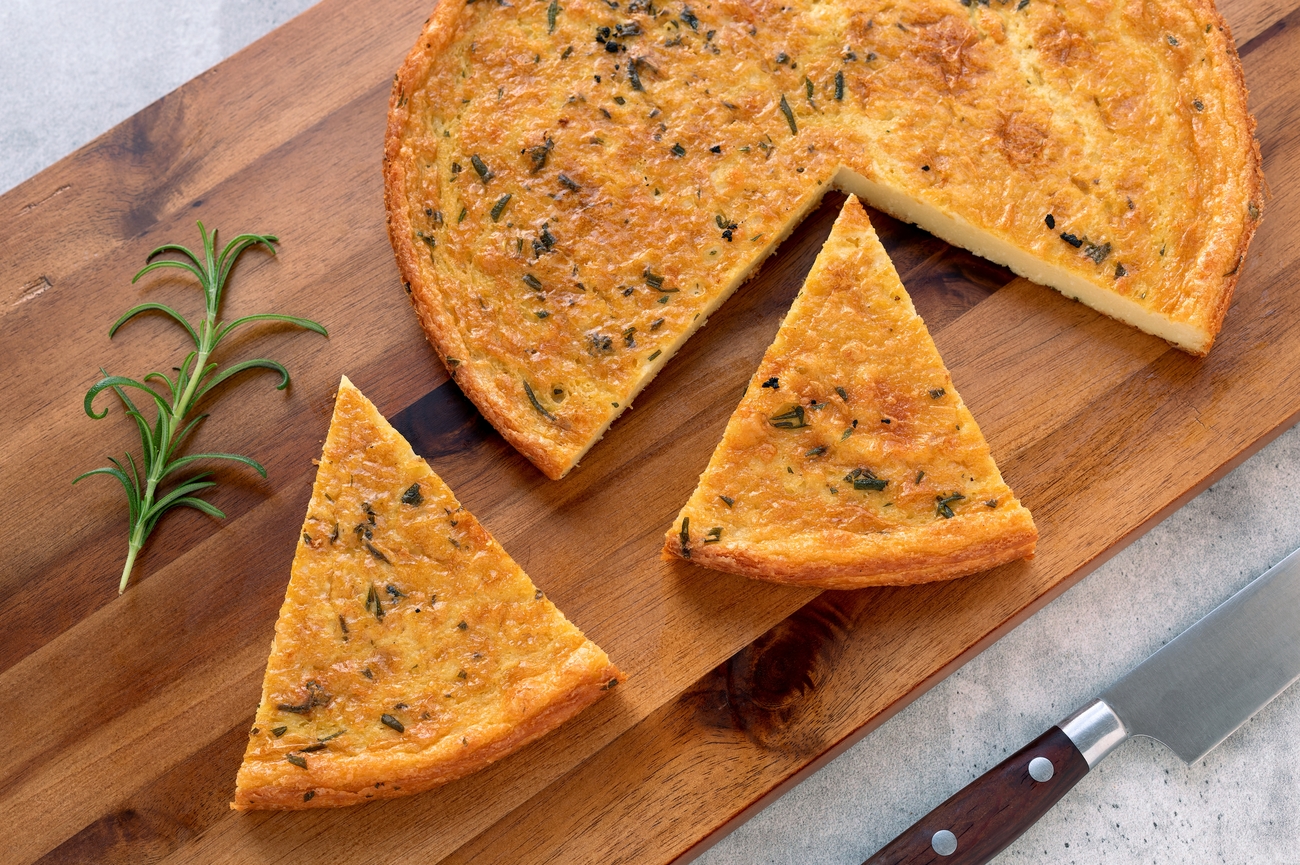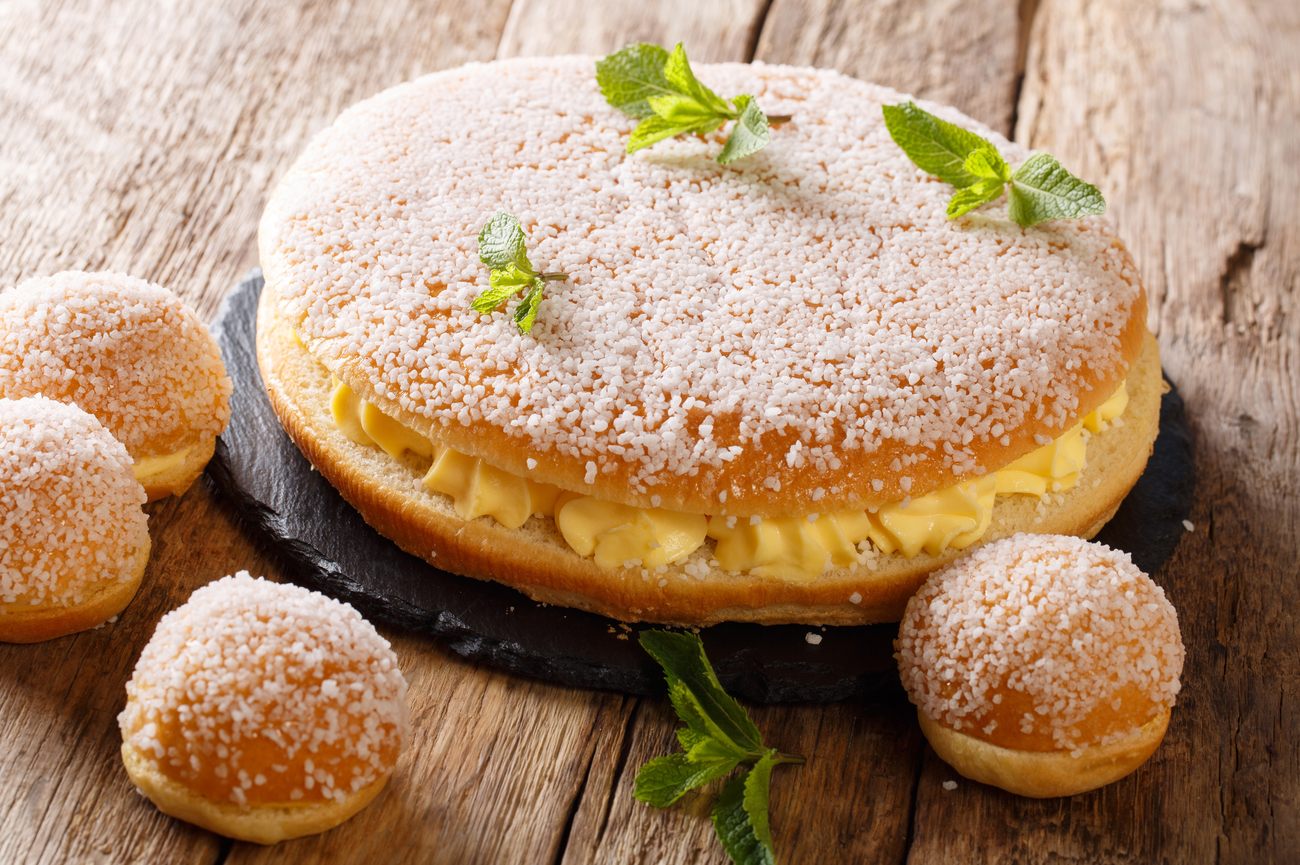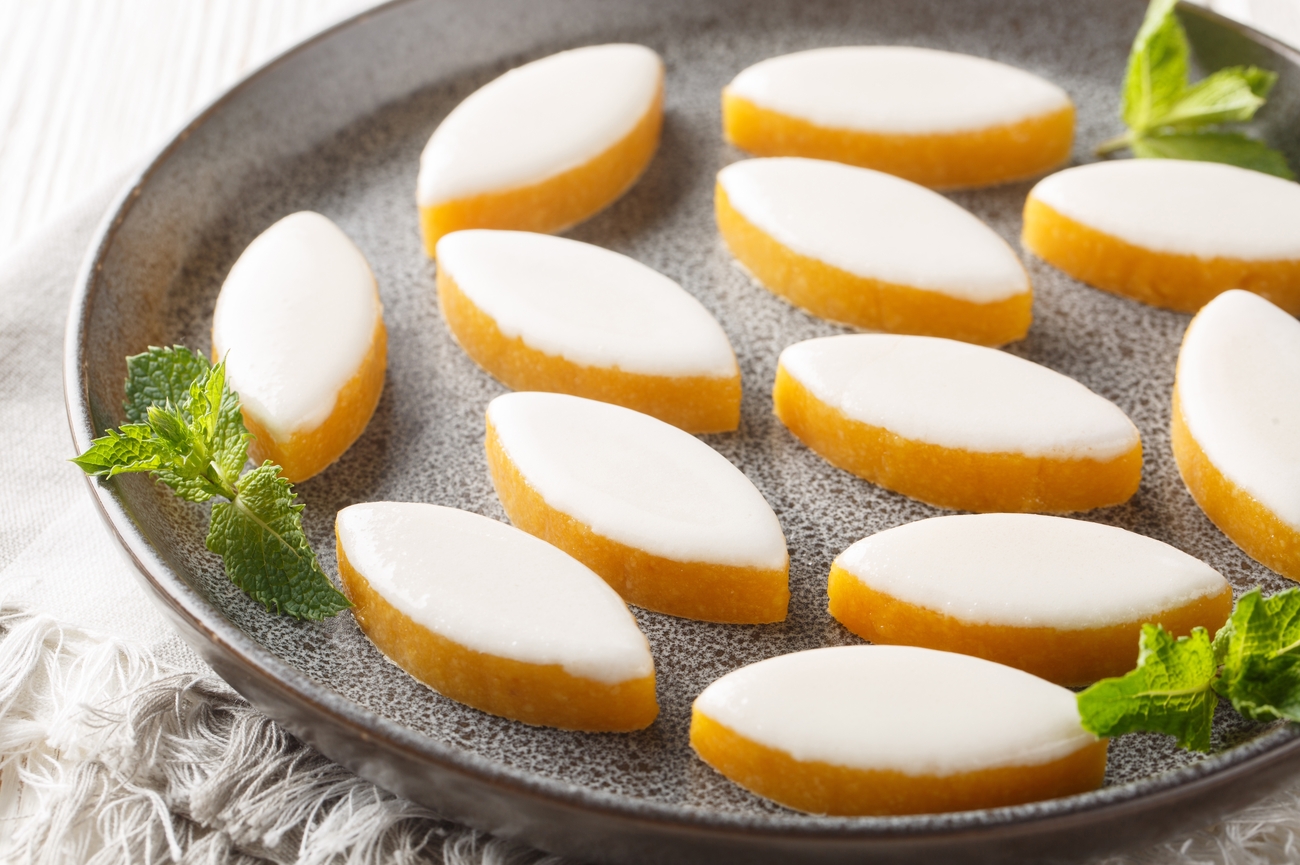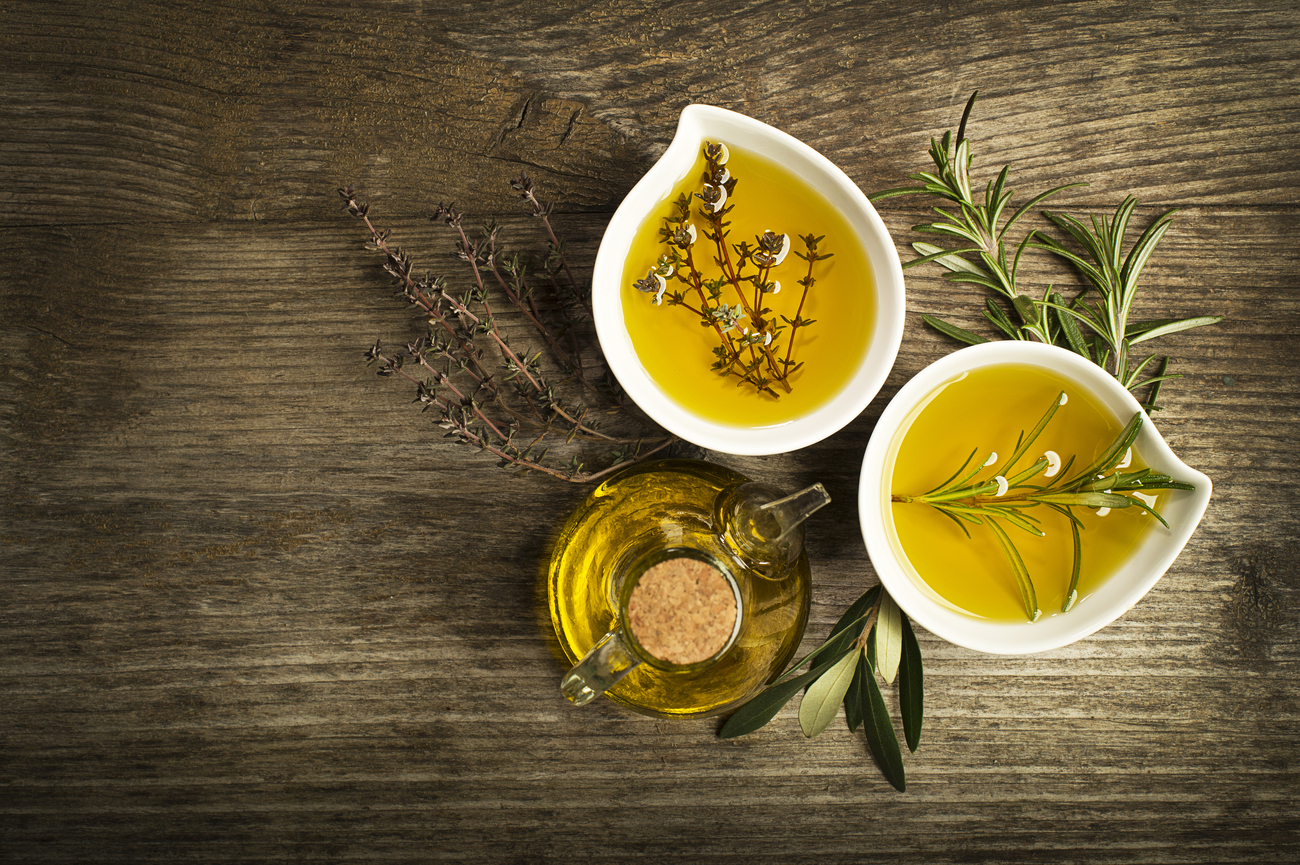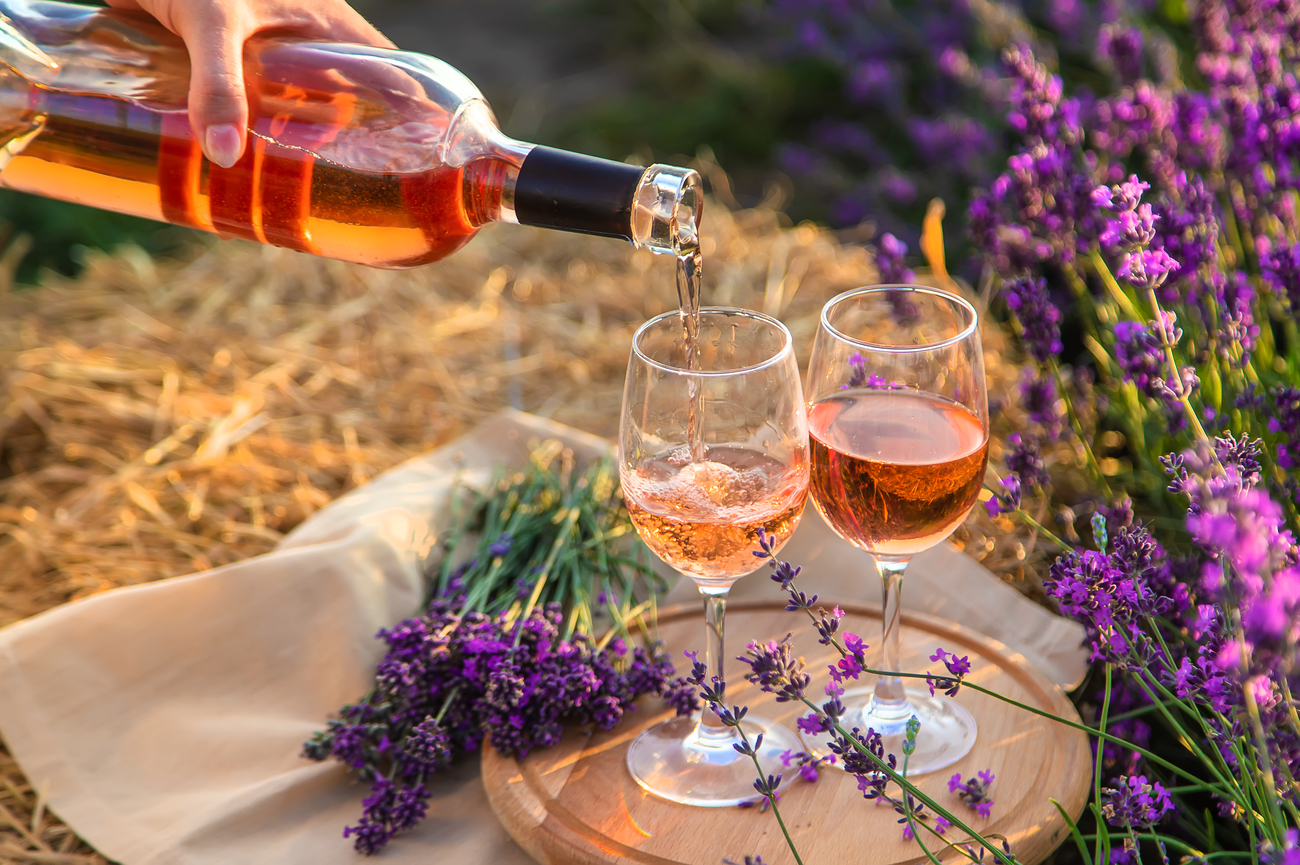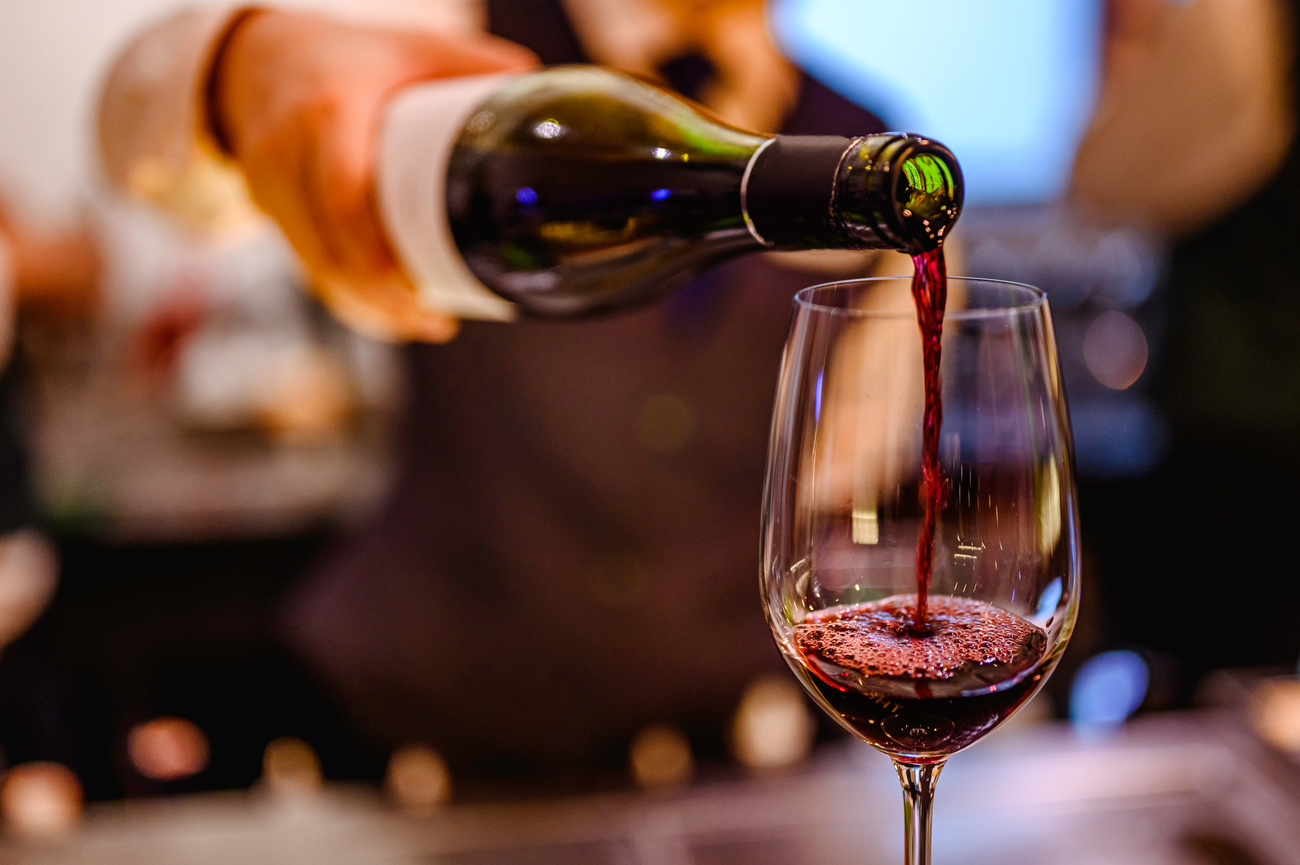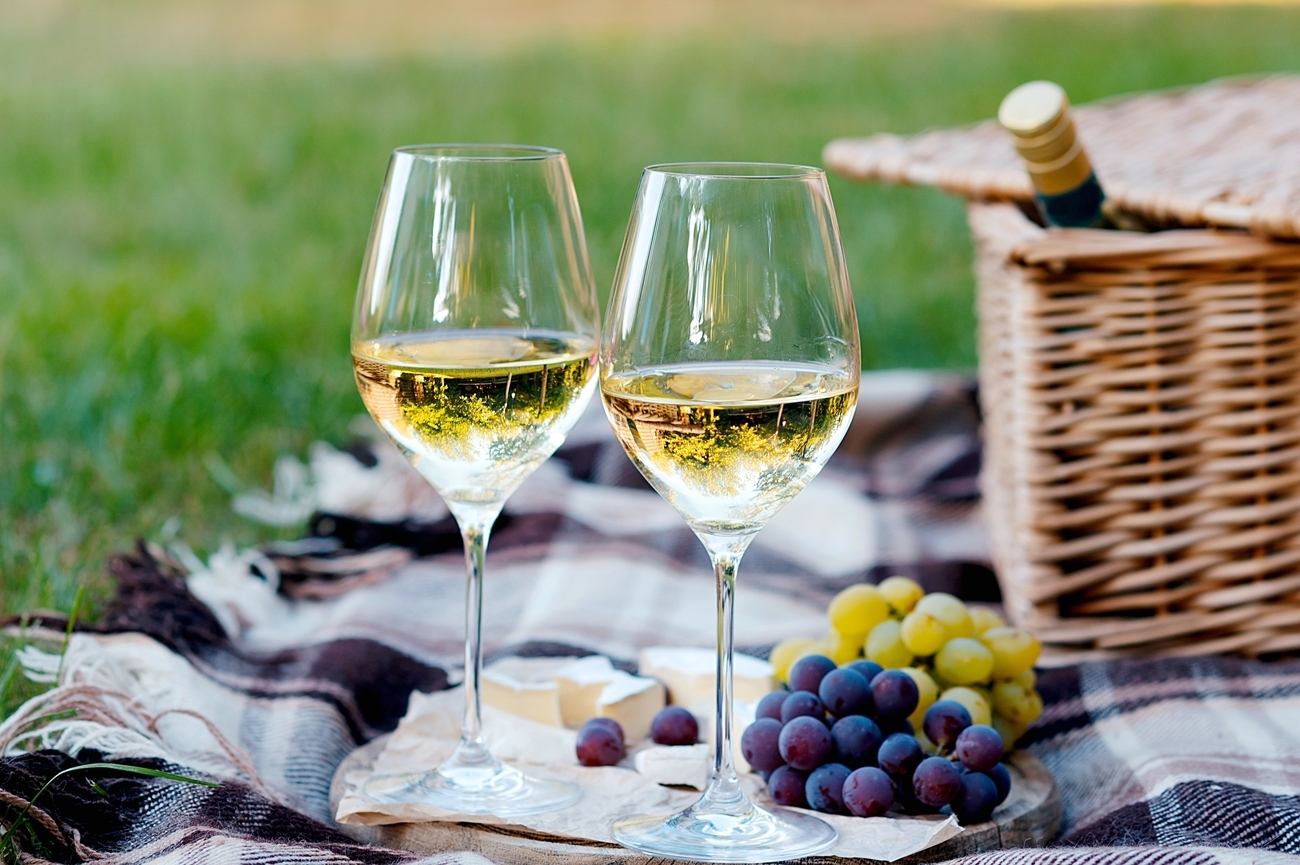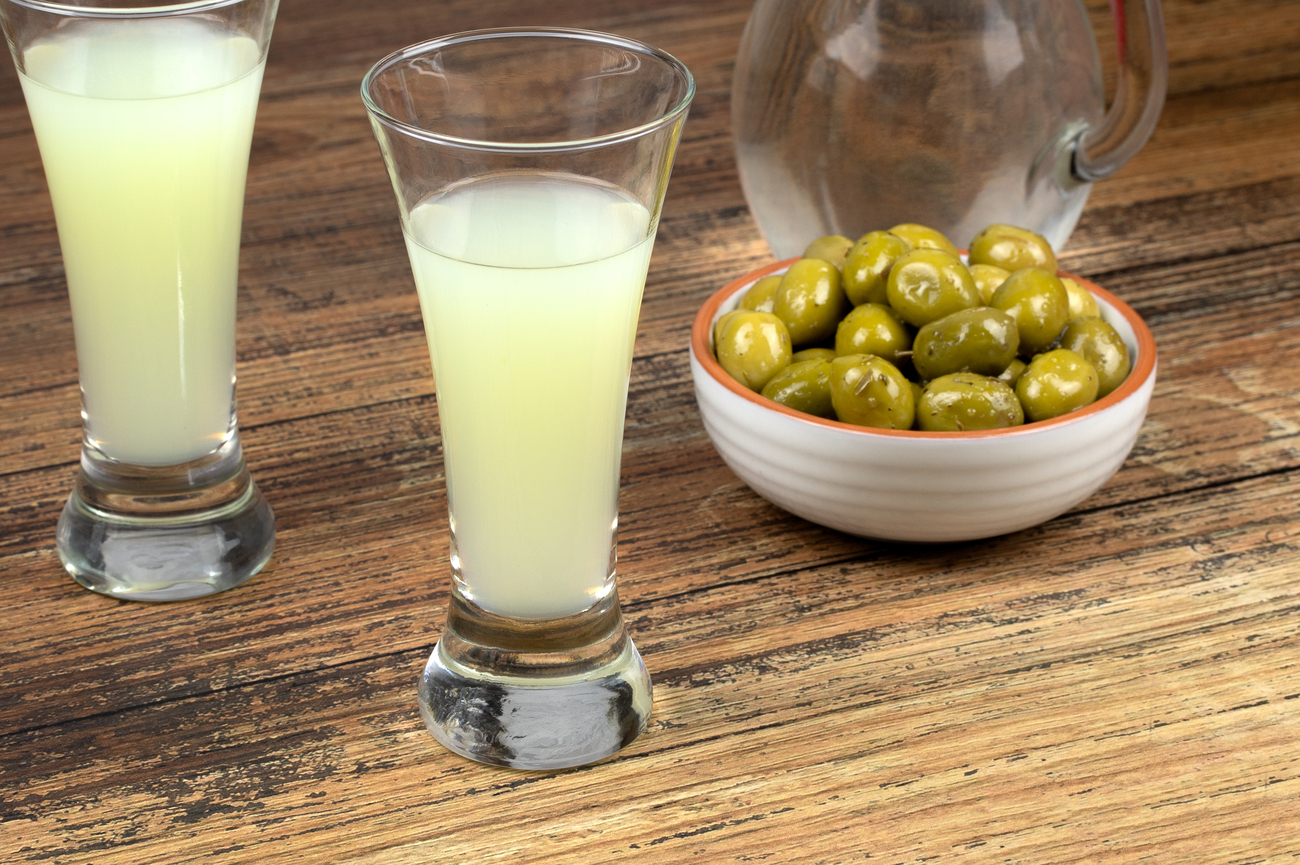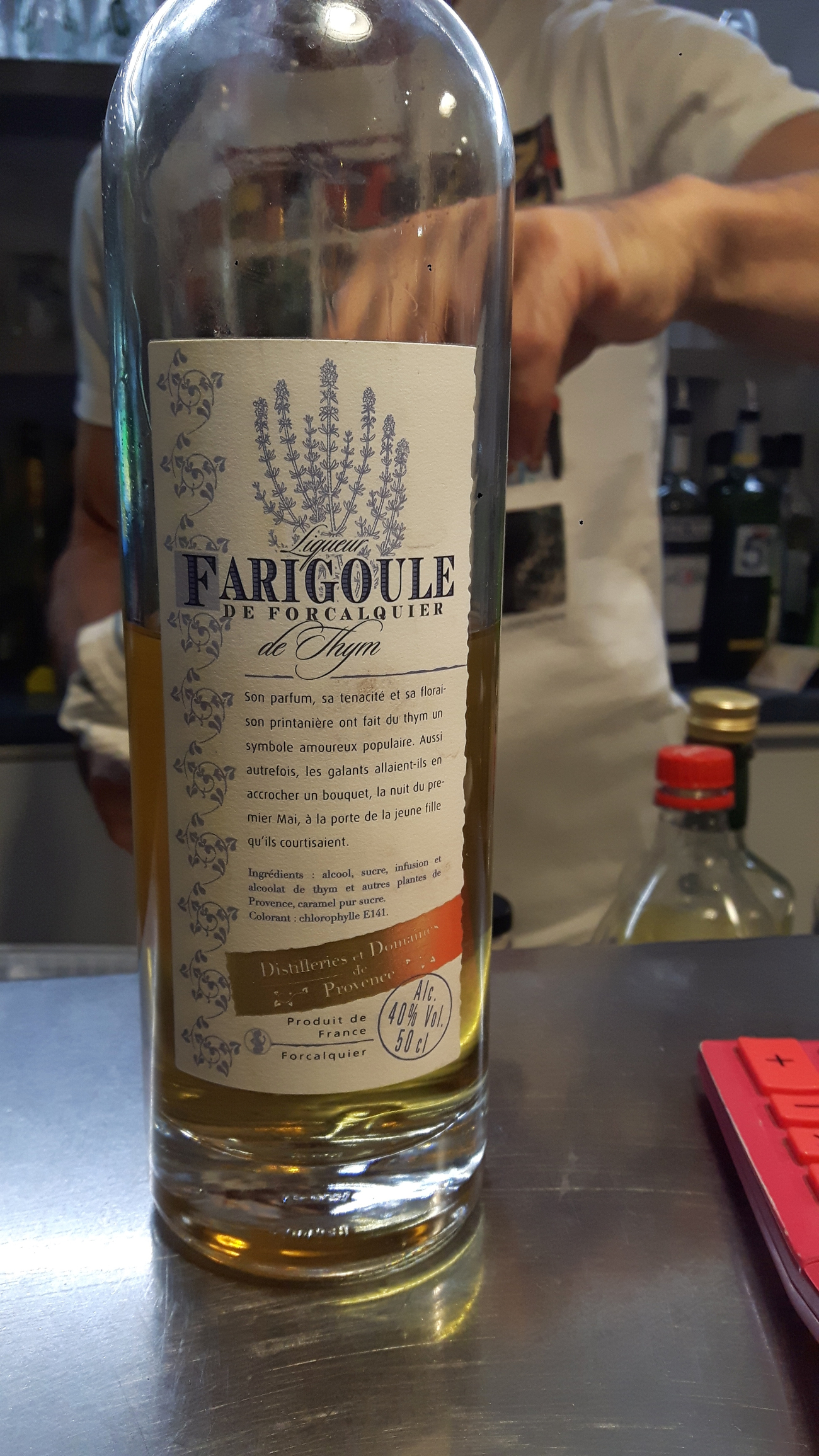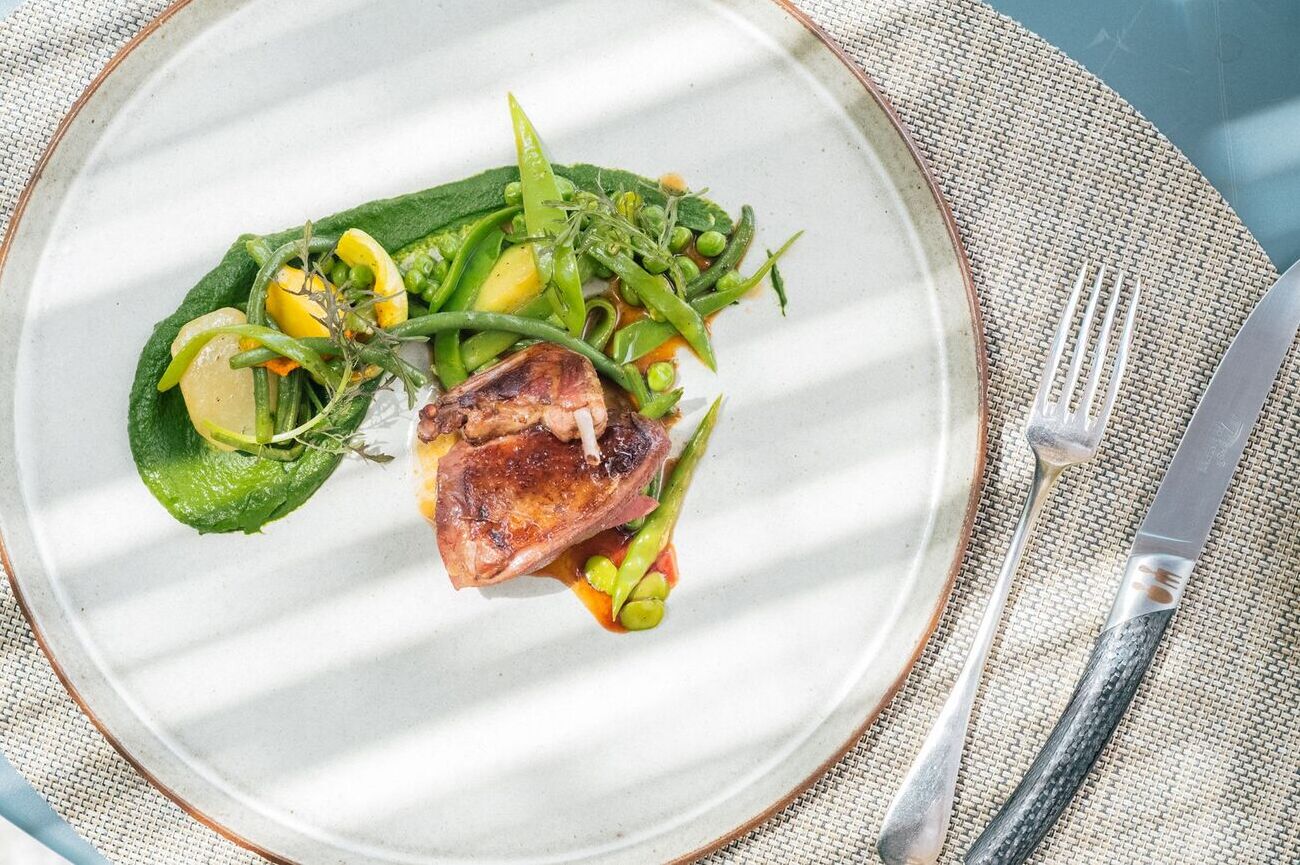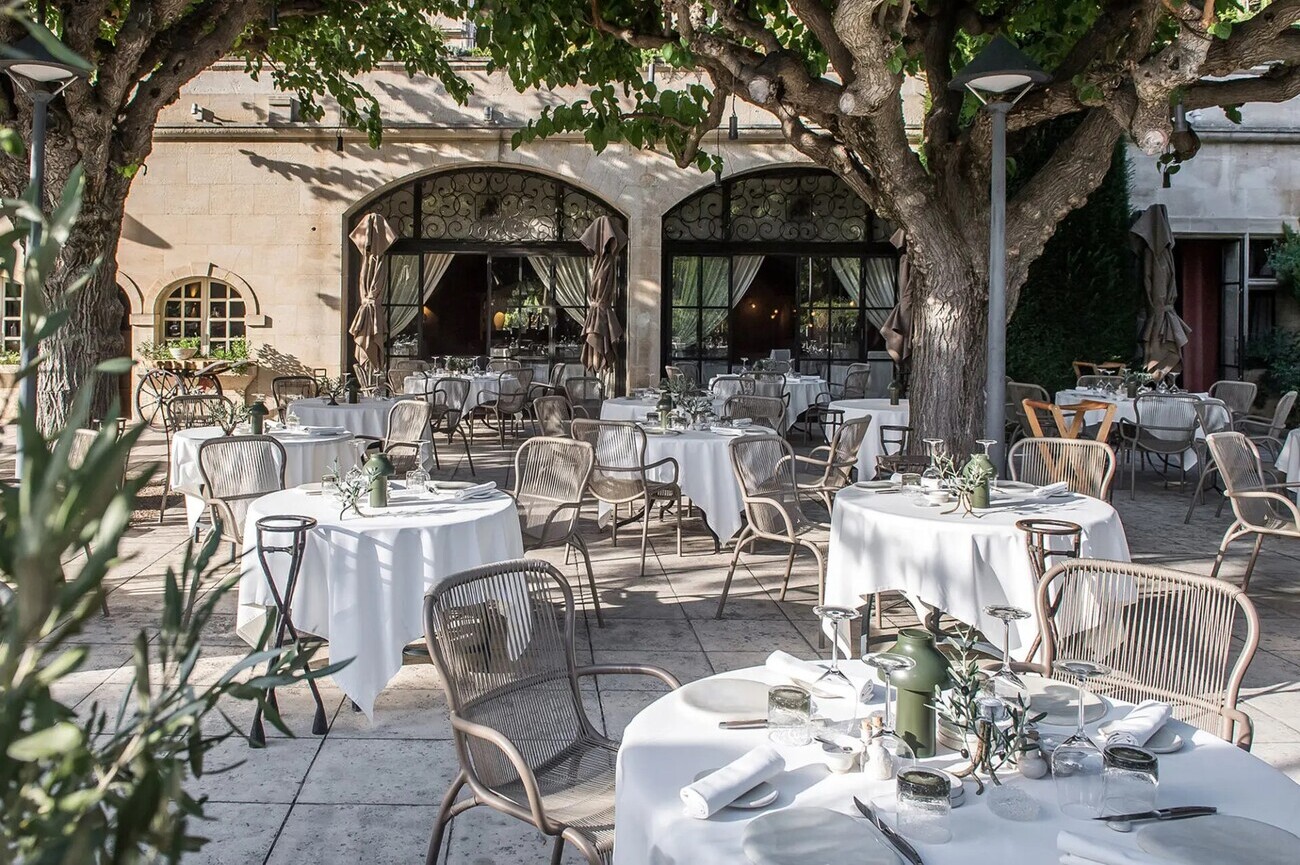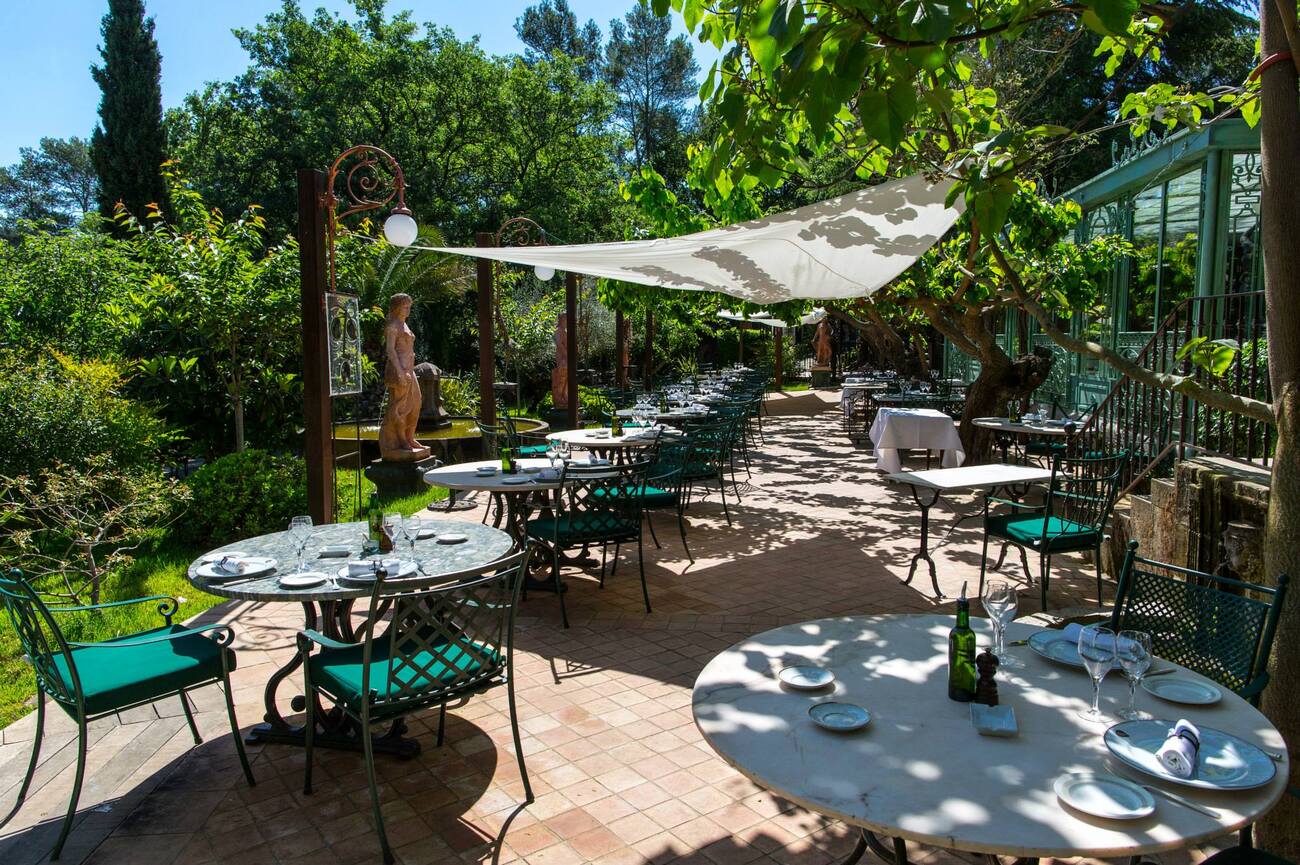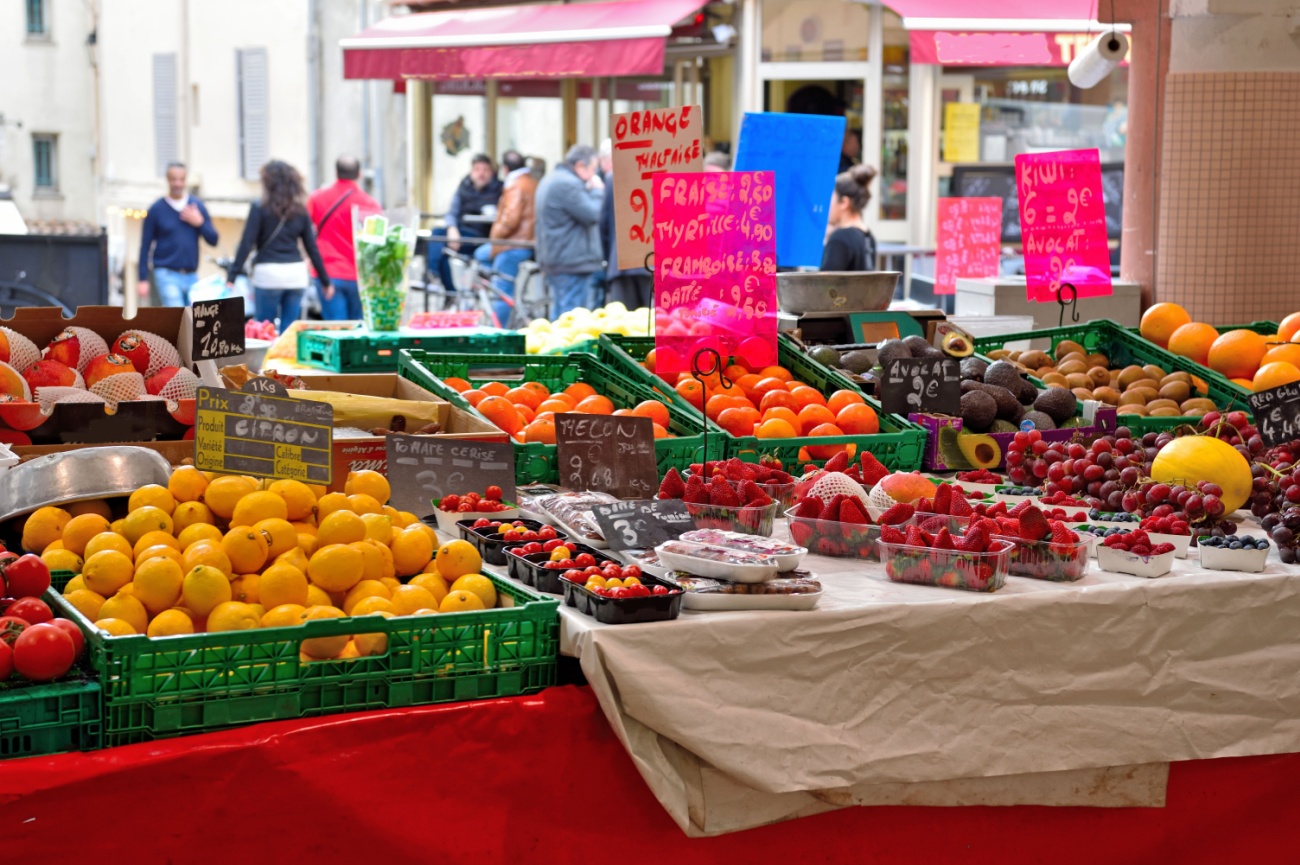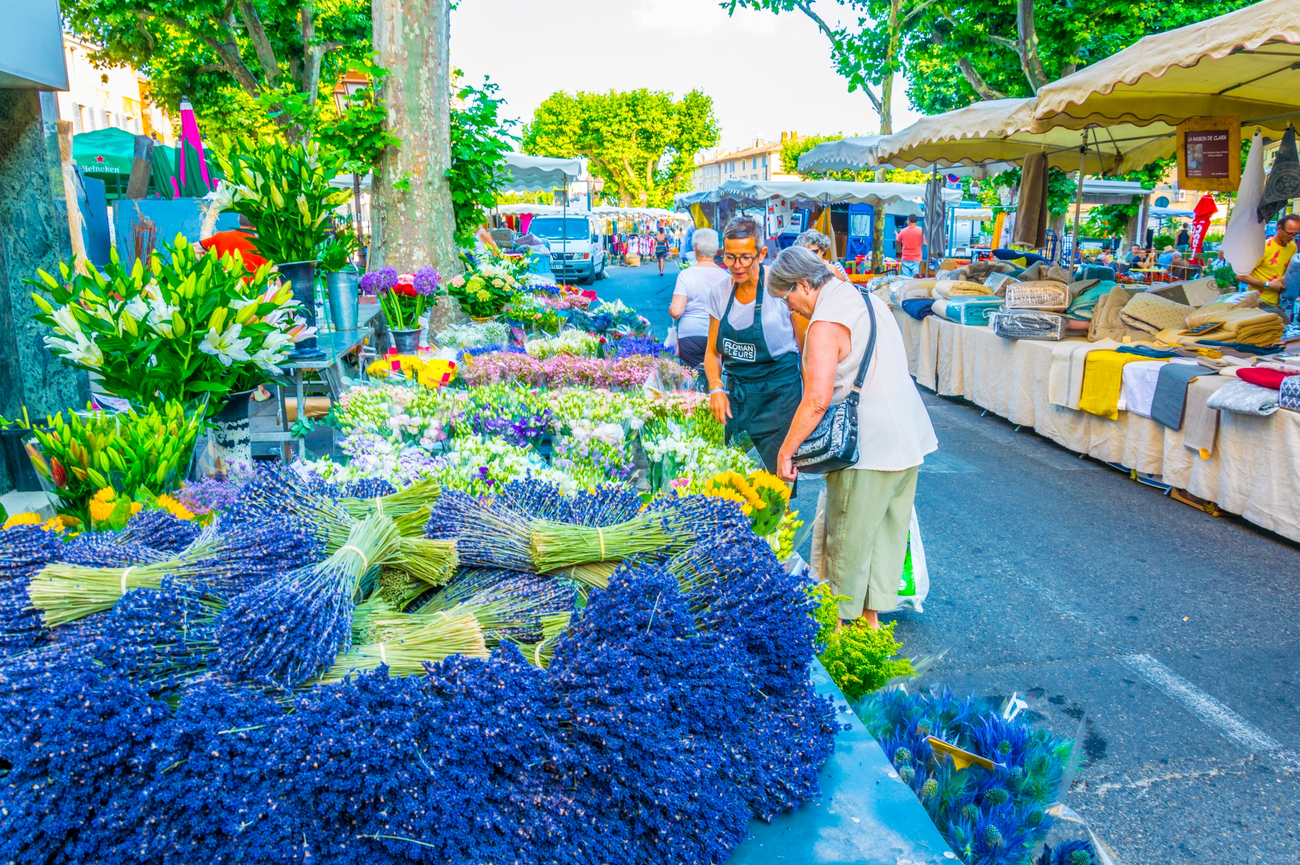Provence Food Guide: What to Eat &
Where to Go
Explore Provence through food: iconic dishes, local wines, top restaurants, and markets. A luxury culinary guide for every food lover.
Provence is a region shaped by what grows well and what keeps well. The food reflects that; olive oil, garlic, almonds, tomatoes, melons, goat cheese, lamb, and herbs that don’t need much rain. Markets run year-round because people cook seasonally out of habit. Nothing about the cuisine is forced or decorative. It’s built around what’s nearby and what has worked for generations.
The rhythm of eating here follows the land. Markets open early and close by midday. Meals are rarely rushed. Recipes are inherited rather than reinvented. The wines; reds from the Dentelles and white blends from Cassis, are made to be enjoyed alongside food, not above it. Travelers who come to Provence for food rarely leave with a list of restaurants. They leave remembering flavors, towns, conversations, and a sense of wanting to come back. A bowl of bouillabaisse in Marseille. A slab of pissaladière eaten standing up. A still-warm fig, picked just outside a vineyard.
This guide traces that experience: what to eat, where to find it, and how to understand the region through its food and wine. Nothing curated. Just Provence, as it has always been.
Provence
is a Paradise for Food Lovers
Provence has always known how to eat well.
Its culinary identity was shaped long before the word “gastronomy” became fashionable. This sun-drenched region in southeastern France sits at the crossroads of Mediterranean Europe, and for centuries, its cuisine has absorbed and adapted the methods, and sensibilities of those who passed through or settled; Romans, Greeks, Moors, and Catalans, each leaving behind traces on the plate.
Its foundation is agricultural. Long before Provence was romanticized by artists and travel writers, it was a region of small farming communities. Olive groves, lavender fields, vineyards, and herb-covered hills defined both the economy and the pantry. Ratatouille, once a humble vegetable stew made from leftover summer produce, is now an emblem of Southern French cooking. The sea also played a role. Along the Mediterranean coast, fishermen brought in red mullet, sea bass, and monkfish, shaping dishes like bouillabaisse, which originated in the port of Marseille as a fisherman's stew made from the unsellable catch.
The Provençal table as we know it today was crystallized in the late 19th and early 20th centuries, when writers like Frédéric Mistral and Jean Giono celebrated the region’s rural character, and when tourism first began to trickle into the hills and villages. By mid-century, with the arrival of the French Riviera jet set, the region's food culture came under a new kind of spotlight. The Michelin Guide began to take interest, but even today, some of the region’s most memorable meals are found in unstarred kitchens, served in courtyards under fig trees, where the rosé is cold and the recipes haven’t changed in fifty years.
It's a region where culinary heritage is not only displayed but lived.
Signature
Dishes and Local Specialties in Provence
- Bouillabaisse: This fisherman’s stew that originated from Marseille is the most iconic dish of coastal Provence. Traditionally made with at least three kinds of rockfish like rascasse and conger eel, it’s simmered with tomato, fennel, garlic, saffron, and orange zest that brings about a broth as golden as the Provençal sun. Best served with rouille (a garlicky saffron aioli) and toasted baguette, this dish’s flavor is deep and briny, like the sea at dusk; sharp and aromatic, with an undercurrent of sweetness from long-simmered onions and tomatoes. No two bowls are the same, but a proper bouillabaisse feels both rustic and ceremonial.
- Ratatouille: Though often misrepresented as a side dish, real Provençal ratatouille is a slow-cooked medley of summer’s best: eggplant, zucchini, bell peppers, onions, and tomatoes, each sautéed separately to preserve flavor, then layered together with thyme, basil, and olive oil. It tastes of sun-warmed gardens and earth that is silky and faintly tangy, with soft vegetal notes that melt on the tongue. In Provence, it’s served warm or cold, as a main dish with crusty bread or alongside grilled meats.
- Pissaladière: A specialty of Nice, this flatbread blurs the line between tart and pizza. Its base: a soft dough spread thick with caramelized onions, dotted with black olives and anchovy fillets. It’s salty, sweet, and slightly pungent, a real taste that wakes up the palate like a gust of sea breeze. Best eaten warm from a bakery counter, it’s a staple of Provençal street food and apéro spreads.
- Daube Provençale: This is Provence’s answer to Burgundy’s boeuf bourguignon. A slow-braised beef stew marinated in red wine, orange peel, garlic, and herbes de Provence, then simmered for hours until the meat yields at the slightest nudge. Often enriched with olives or mushrooms, it’s deeply savory, with notes of citrus and spice rounding out the richness. It tastes like autumn in the hills that is warm, comforting and served with pasta or polenta.
- Aïoli: Le Grand Aïoli is not just a garlic mayonnaise but a full dish and a traditional Friday meal that brings together a generous spread of poached cod and hard-boiled eggs and vegetables, all served with a velvety aïoli made by hand using a mortar and pestle. The sauce is the soul of the experience: pungent and creamy with a bracing hit of raw garlic mellowed by the silkiness of Provençal olive oil. When spooned over tender potatoes or sweet carrots, the combination becomes both elemental and electrifying.
- Tapenade: More than a condiment, this olive-based spread is a signature of Provençal apéritifs. Made from finely chopped black olives, capers, anchovies, and garlic, it’s spread onto toast or scooped onto crudités. The flavor is intensely savory with its hints that are earthy, salty, complex, and a long, umami finish. It tastes like the region’s limestone hills and salt-kissed winds distilled into a single bite.
- Socca: Socca is a thin chickpea pancake from Nice, traditionally cooked in a scorching wood-fired oven. The surface blisters to a golden crisp while the center stays soft and yielding. It is eaten hot, dusted with black pepper, and torn by hand. The flavor is earthy, nutty, and just slightly bitter, with a trace of smoke from the oven. Locals fold it in paper and snack on it while walking through the market; a humble, unmistakable taste of the Côte d’Azur.
- Tarte Tropézienne: A dessert born in Saint-Tropez in the 1950s, this brioche is split and filled with a mix of pastry cream and buttercream, then dusted with pearl sugar. Created by Polish baker Alexandre Micka and named by Brigitte Bardot, it’s indulgent but delicate. The taste? Cloud-soft dough and a cool, custardy center, tied together with a whisper of orange blossom that lingers.
- Calissons d’Aix: A confection from Aix-en-Provence, these almond-shaped sweets are made with candied melon and orange peel blended with ground almonds, set on a thin wafer, and glazed with royal icing. The flavor is tender and perfumed; part marzipan, part fruit jelly, with a texture that melts slowly on the tongue. Traditionally given during religious festivals, they now appear in luxury gift boxes and pâtisseries across the region.
- Provençal Herbs & Olive Oil: Though not a dish in themselves, no list is complete without the real pillars of Provençal flavor: thyme, rosemary, basil, lavender, and especially the olive oil; all golden, and pressed from century-old groves. These ingredients infuse everything here. Drizzle them over a tomato salad or grilled lamb and they speak louder than any sauce. They are the quiet signatures of a cuisine defined by restraint, honesty, and terroir.
Provence’s
Wines, Spirits, and Beyond
The drinks of Provence are inseparable from its land, shaped by sun-drenched hillsides, salty breezes from the Mediterranean, and centuries of agrarian tradition. While rosé might be the region’s most famous export, Provence’s vineyards and distilleries yield a broad and expressive palette.
- Provençal Rosé: No drink captures the spirit of Provence quite like its pale pink rosé. Crafted primarily from Grenache and Mourvèdre, Provençal rosé is crisp and aromatic with notes of strawberry, citrus peel, melon, and crushed stone. The vineyards of Coteaux d’Aix-en-Provence and Bandol each bring subtle variations in style and terroir. While often enjoyed as an apéritif, the best bottles pair effortlessly with bouillabaisse or grilled langoustines.
- Bandol Reds: Inland from the coast, the limestone soils and coastal winds of Bandol create one of Provence’s most robust wines: Mourvèdre-based reds. These age-worthy wines are deeply structured, with layers of blackberry, tobacco, and garrigue; the wild thyme, rosemary, and lavender that grow across the region. Bandol reds are a bold counterpoint to the region’s lighter fare and pair beautifully with dishes like daube Provençale or grilled lamb.
- White Wines from Cassis and Palette: Cassis, a small fishing village east of Marseille, produces white wines that are bright and mineral-driven, made from Clairette and Ugni Blanc. They offer aromas of white flowers and sea spray; a natural match for shellfish or sea bream. Palette, one of Provence’s smallest and oldest appellations, is a lesser-known gem with complex, structured whites that are often barrel-aged and built to evolve.
- Pastis: Invented in Marseille in the early 20th century, Pastis is an anise-flavored spirit traditionally diluted with cold water until it clouds to a milky hue. Locals sip it before lunch, often with a cube of ice, while playing pétanque or watching the sun inch across a café terrace. Its flavor is bold and unmistakable and echoes the Mediterranean herbs that blanket the landscape.
- Herbal Liqueurs & Distillates: Beyond the vineyards, the hills of Provence yield ingredients for small-batch spirits and liqueurs. Farigoule, a thyme-based liqueur from Haute-Provence, is often served chilled as a digestif. Other artisanal producers use wild herbs or stone fruits to create complex eaux-de-vie and aperitifs with a clear sense of place.
Top
Restaurants & Food Markets in Provence
Provence’s culinary landscape is shaped by its world-renowned recipes as well as where they’re sourced. The region offers both rustic authenticity and refined execution; from bustling village markets to Michelin-starred dining rooms set in converted farmhouses. Here are some of the most respected and sought-after places for food lovers.
- La Chassagnette (Arles): This Michelin-starred, vegetable-forward restaurant, tucked inside the Camargue countryside, sits beside its own organic garden. Chef Armand Arnal transforms produce grown steps from the kitchen into elegant, seasonal tasting menus. The setting is understated, yet the food is imaginative, a true study in what Provençal terroir can express on a plate.
- L’Oustau de Baumanière (Les Baux-de-Provence): Set beneath the rocky cliffs of Les Baux, this historic Relais & Châteaux property is home to one of Provence’s most celebrated dining experiences. Holding two Michelin stars, the restaurant blends classical French technique with Mediterranean brightness. Here, you can expect masterful wine pairings and rare vintages.
- Chez Bruno (Lorgues): This family-run restaurant has achieved near-mythic status for one reason: truffles. From velouté to ice cream, almost every dish pays homage to the prized fungus. The setting? A Provençal villa surrounded by oak trees that makes the experience immersive and indulgent.
- Marché Forville (Cannes): Though Cannes is more often associated with cinema than soil, this covered market is a treasure trove of regional produce. Stalls overflow with heirloom tomatoes, lavender honey, local goat cheeses, and olives in every shade. It’s also one of the best places to observe how locals shop with instinct and absolute confidence in the quality of what they’re buying.
- Marché d’Apt (Luberon): Held on Saturdays, this market is one of the largest and oldest in the region. It stretches across the center of Apt, winding past boulangeries and family-run stalls. Seasonal specialties like muscat grapes, fig confitures, cheese, and wild mushrooms appear at their peak, sold by growers who often arrive before dawn.
The
Luxury Culinary Escape in Provence
Provence didn’t become a food lover’s destination in France overnight. Its cuisine is shaped by centuries of resourcefulness, by chefs and home cooks who understood how to let ingredients speak for themselves. Today, that same philosophy still defines the region; from wood-fired socca eaten in market squares to tasting menus that pair heirloom vegetables with local wines under vaulted stone ceilings.
What makes Provence exceptional is how every meal is rooted in place. Vineyards that have stayed in the same family for generations, olive oil pressed from trees older than memory, seafood caught that same morning; they’re not curated for effect. They’re simply how people live here.
If this is the kind of experience you want, we’ve crafted something for you. Discover the Luxury Culinary Escape to Provence, a five-day journey designed to help you taste the region in its truest form.
Let us show you how Provence remains one of the world’s great food regions. Speak with our travel expert and allow us to take you there.
Frequently Asked Questions
-
Is Provençal food vegetarian-friendly?
Yes, Provençal cuisine is grounded in vegetables and herbs so you will find dishes like ratatouille and chickpea-based panisse or socca. Even traditional meat or seafood meals come with generous vegetarian sides.
-
What wines should I try in Provence?
Provence is famous for its rosé, but there’s more than pink in the glass. White wines from Cassis pair beautifully with seafood, and reds from the interior regions like Les Baux-de-Provence offer bold, herbaceous character.
-
Are wine tastings included in the vacation package?
Of course, the Luxury Culinary Escape to Provence includes private wine tastings at award-winning estates, complete with sommelier-led pairings. You’ll sample a range of wines in settings that reflect the heart of the region.
-
Is tipping expected at restaurants?
Service is typically included in the bill in France. But rounding up or leaving a few extra euros for good service is always appreciated, especially in more casual or family-run places.
-
Will I need to speak French?
While it’s helpful to know a few basics, many in hospitality speak English especially in the food and wine scene. We can guarantee though that local guides and hosts ensure smooth communication at every stop.
Our offices:
